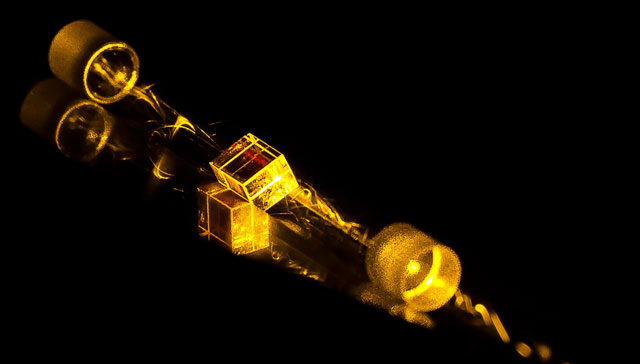
In quantum physics, entangled particles remain connected so that actions performed on one instantaneously affect the state of the other, even when they are separated by large distances. This property can be utilised to create private encryption keys for provably secure communication. One photon from a pair of entangled photons is sent to each of two remote parties wishing to communicate. If an eavesdropper intercepts a photon and re-transmits it on to the intended party, they will introduce detectable errors into the signal. The parties will then know to discard those bits of information, rather than using them in their encryption key.
Quantum communication on a national scale cannot be realised until a method is developed to overcome the loss of quantum information when transmitting over large distances. The most popular proposal is to divide the transmission channel into several segments, such that there is low information loss across each link. This is the “quantum repeater” approach. First, a quantum state is created at the nodes between each link and neighbouring nodes are entangled. The entanglement is then distributed across neighbouring links until quantum information can be distributed across the entire communication channel.

As well a source of entangled photons onto which the information is encoded, another critical component for the development of a quantum repeater is a quantum memory, capable of storing the transmitted light and recalling it on-demand at a later time. These memories are required at each node to act as buffers, allowing operations to be synchronised across the network. However, current entangled light sources are incompatible with quantum memories due to a mismatch in the bandwidth of the light and what the memory can store.
We have recently demonstrated a new type of entangled light source where the light is generated from the same rare earth ion crystals we use to make quantum memories. Not only is the entangled light compatible with our existing memories, but the source also has an in-built quantum memory, making this scheme the perfect building-block of a quantum repeater. This experiment represented the first time quantum entanglement was stored in a solid-state spin-wave quantum memory.
We are currently working towards entangling the quantum states of two well-separated crystals, forming a quantum repeater link.